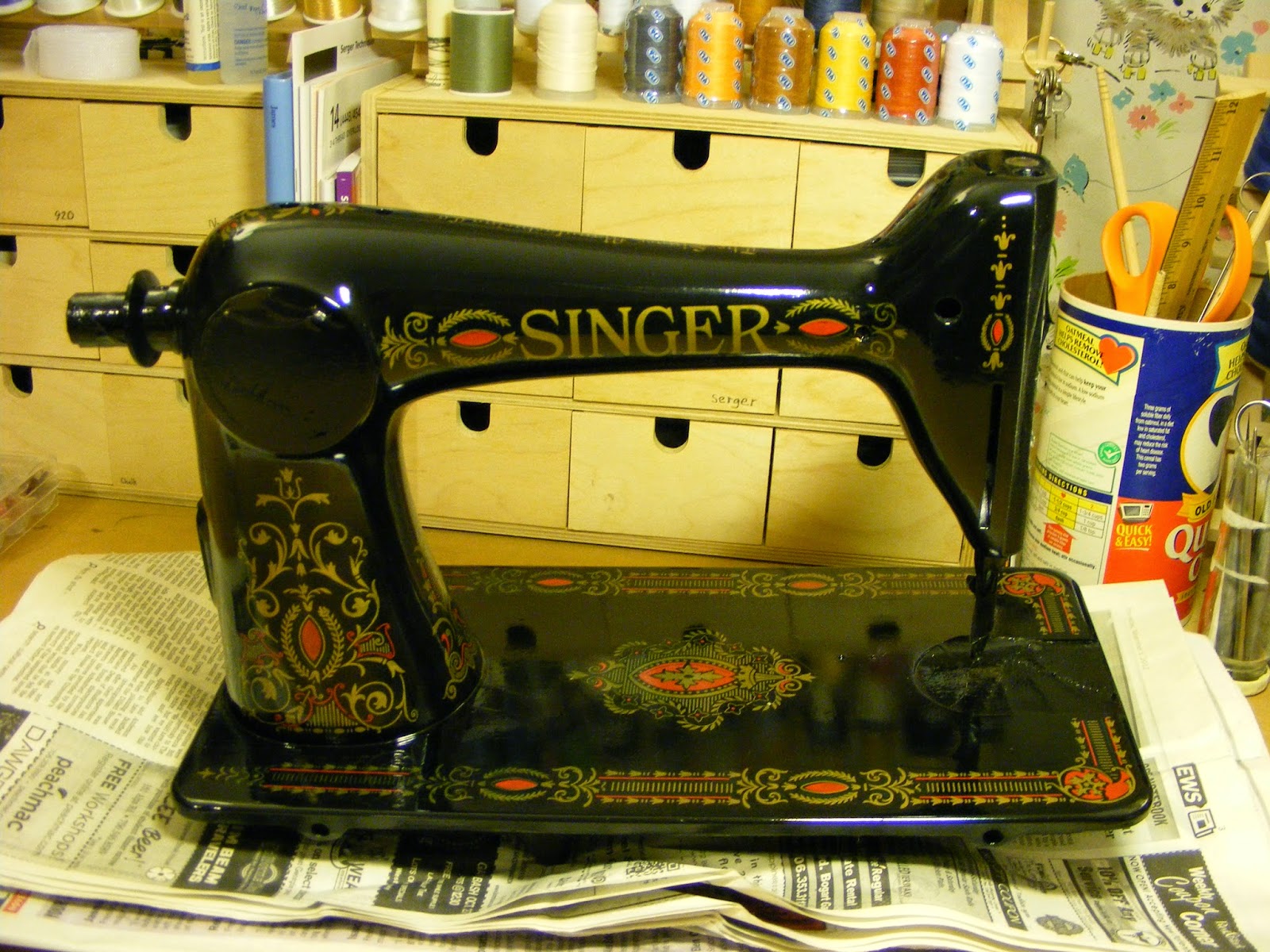Here it is on the machine with a straight stitching foot attached:
The thumb screw is long and sturdy. Here it is with my blindstitcher:It is installed by removing the back clamping collar and replacing it with this adapter. The original screw is used to fasten it to the bar. I'm not going to publish her email address, but you can find her contact information at TreadleOn under "lindalu".
I have a cheap hand crank I was going to use with this machine. In fact, I had not planned to put this machine back in the treadle base. I bought a handmade wooden display base for it to sit in for hand cranking and I was going to leave the converted 306 in the treadle. I decided I didn't like the 306 enough to waste the treadle on it after the restoration turned out so well, and I thought I could put the hand crank on the 306 to use with the original spoked wheel off the 66. I even went out and bought some brown paint for the wheel. Wouldn't you know it, the spoked wheel is larger than the original solid wheel and the hole in the motor boss wouldn't line up with the hole in the hand crank. I decided to put it on the 66 anyway so here's that mod:
So now I can treadle or crank. Neither method adds any drag to the other to speak of. I always liked the idea of a hand cranked machine, but having finally tried it, I'm not too keen. You have a lot of control over the machine, but not a lot over the sewing. I'll probably take it back off.
I've noticed from working with really old machines that the introduction of plastic gears and rubber belts in the 50s and 60s caused a decline in quality that was far more severe than I thought. There are machines over 100 years old that are still gliding silently away, as smooth as the day they were made, and then you have machines like my Futura 920, where something tears up literally every single time I use it. Even though that machine is 40 years old and well made by today's standards, there is no comparison between that machine and my grandmother's 15-91, about 20 years older. The only plastic on that one is a little bakelite here and there. I'll take bakelite over plastic any day. It may be brittle, but it doesn't rot. I saw on the sewing machine episode of "Secret Life of Machines" where manufacturers would destroy trade-ins to get them off the market because they never went bad. Then they discovered plastic. And then in the 70s came the holy grail of obselesence, electronics.

.jpg)



















